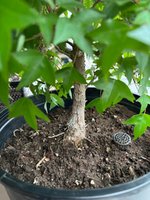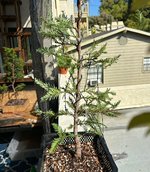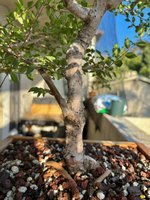zeejet
Mame
I've labored over the topic of optimizing trunk size growth in containers since I started the hobby this January and was under the impression that I should plant in a large (within reason) container and leave it alone - I'm now realizing that side branches can thicken dramatically fast on vigorous species after observing my elms, ficuses and trident maple this season. I wish to avoid massive scarring on the lower trunk, but is letting growth run completely untouched the only way to maximize growth? Or is some intentional and selective pruning beneficial during the growth process in order to reign in unwanted swelling and minimize wound size moving forward?
I am also aware that vigorous lower branches can be used as sacrifice branches, but this seems to be somewhat outdated advice as a lot of modern bonsai horticultural discussions seem to question the actual utility of low sacrifice branches as they pertain to developing taper.
Anyhow, any advice on how to approach trunk growing for vigorous species? Do I prune or let it run untouched? If I should prune, what should I be looking for when making cut decisions?
I am also aware that vigorous lower branches can be used as sacrifice branches, but this seems to be somewhat outdated advice as a lot of modern bonsai horticultural discussions seem to question the actual utility of low sacrifice branches as they pertain to developing taper.
Anyhow, any advice on how to approach trunk growing for vigorous species? Do I prune or let it run untouched? If I should prune, what should I be looking for when making cut decisions?



